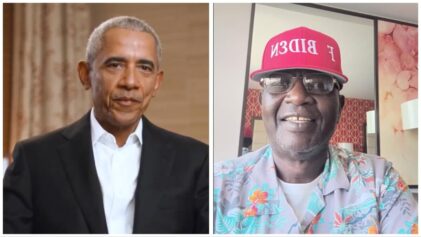
Students cheer after the announcement that University of Missouri System President Tim Wolfe would resign.
JEFF ROBERSON / AP
Is there an attempt to pacify Black protest? In the face of white supremacy, a movement led by young Black people, particularly Black women, has decided it will no longer participate in a system of oppression. No longer will they employ the standard rules of engagement, of participation, of turning a blind eye and turning the other cheek, of going along to get along. Rather, they want to change the system entirely.
Observing the new forms of Black activism springing up in America in response to racism–from #BlackLivesMatter to the student protesters at the University of Missouri and elsewhere—as well as the responses to Black protest, one is reminded of Letter From Birmingham Jail. In that piece, Dr. Martin Luther King responded to the moderate white clergy who judged his actions “unwise and untimely.”
“I cannot sit idly by in Atlanta and not be concerned about what happens in Birmingham. Injustice anywhere is a threat to justice everywhere,” Dr. King said. “We are caught in an inescapable network of mutuality, tied in a single garment of destiny. Whatever affects one directly, affects all indirectly… You deplore the demonstrations taking place in Birmingham. But your statement, I am sorry to say, fails to express a similar concern for the conditions that brought about the demonstrations. It is unfortunate that demonstrations are taking place in Birmingham, but it is even more unfortunate that the city’s white power structure left the Negro community with no alternative.”
The more things change, the more things stay the same. Once again, Black people are made to wait and urged to show patience and respect the democratic process. This, in a nation that uses drones and other means to get their point across to other countries, killing innocent civilians, and bankrolls another nation which builds settlements on Palestinian land and denies basic rights to them, pretending they do not exist.
In a recent interview with George Stephanopoulos, President Obama praised protesters at the University of Missouri and at Yale for speaking out against hatred, inequality and injustice, and said he wants his own daughters to follow in their footsteps. However, the President insisted that people understand the viewpoints of others before speaking against them.
“But I tell ’em: ‘I want you also to be able to listen. I don’t want you to think that a display of your strength is simply shutting other people up’,” Obama said. “And that part of your ability to bring about change is going to be by engagement and understanding the viewpoints and the arguments of the other side. The civil rights movement happened because there was civil disobedience, because people were willing to go to jail, because there were events like Bloody Sunday. But it was also because the leadership of the movement consistently stayed open to the possibility of reconciliation and sought to understand the views – even views that were appalling to them of the other side.”
Meanwhile, writing in The Guardian last December, Phillip Agnew recounted a meeting that he and a group of young Black leaders had with the President following the unrest in Ferguson.
“This wasn’t a group of ‘Beltway Blacks’, this wasn’t a delegation of ‘respectable negroes’, this wasn’t an assemblage of ‘yes men and women’,” he wrote.
The group of young people stressed to Obama that “we had neither the power, positions, nor desires to stop the eruptions in the streets and that they would continue until a radical change happened in this country.” They gave the leader of the free world straight talk, emphasizing the country was on the brink and that “nothing short of major capitulations at all levels of the government to the demands of the people could prevent it.”
“He listened. Intently. He responded passionately. He agreed with many of our points and offered his take on the current State of the Union,” Agnew recalled. “He cautioned us against demanding too big and stressed gradualism. He counseled us that the wheels of progress turn sluggishly and reminded us of the progress that got us to this point: a room full of black folk in the Oval Office.”
Agnew offered that the group walked out the White House meeting “unbought and unbowed.”
“There was no code-switching or bootlicking; no concessions, politicking or posturing. The movement got this meeting. Unrest earned this invite, and we can’t stop,” he said.
It is important to understand the other side in a struggle. When dealing with institutional racism and racial terrorism, it is incumbent upon those who are fighting oppression to understand the systems, policies and procedures, learn the mindset. However, in taking too much time to understand the other side, you may lose sight that some stories simply do not have two valid sides to them. Delaying the inevitable is wasted time on the road to justice. Consider that the new interim president at Mizzou was part of the group of Black students who presented the university chancellor with a list of demands—in 1969.
Let us not forget Frederick Douglass, whose words in 1857 might as well have been uttered a few moments ago.
“Power concedes nothing without a demand,” Douglass said. “It never did and it never will. Find out just what any people will quietly submit to and you have found out the exact measure of injustice and wrong which will be imposed upon them, and these will continue till they are resisted with either words or blows, or with both. The limits of tyrants are prescribed by the endurance of those whom they oppress.”
Political leaders are pushed forward by the movement. Politicians accomplish what is possible, while movements open up spaces for the previously unthinkable, allowing for new possibilities and political realities. And that is what #BlackLivesMatter and the student protest movements are doing for America–to America– right now.


